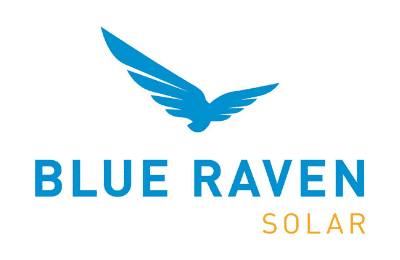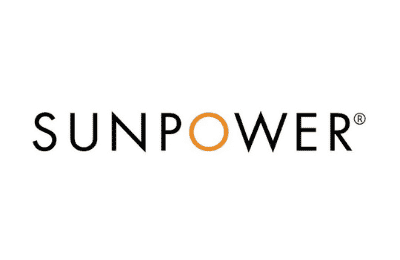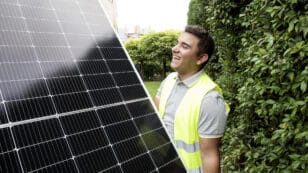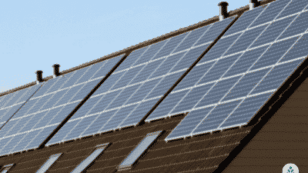
Is Solar Worth It in Arkansas? (2024 Homeowner's Guide)
Here’s a quick overview of solar viability in Arkansas:
- Arkansas ranks 33rd in the country for solar installations.*
- The average electricity rate is 12.52 cents per kilowatt-hour.**
- The average solar payback period is 13 years.***
- Homeowners are eligible for an outstanding net metering program and the federal solar investment tax credit (ITC).
- The average homeowner saves $23,806 over the lifetime of their solar system.***
*According to the Solar Energy Industries Association.1
**Data from the Energy Information Administration.
***Calculated assuming the system is purchased in cash.
Each product and or company featured here has been independently selected by the writer. You can learn more about our review methodology here. If you make a purchase using the links included, we may earn commission.
Arkansas ranks 33rd in the country for solar conversions and offers residents one of the best net metering program options in the country. The state also gets more than the national average of sunny days per year, meaning there is plenty of sunshine to make solar panels worth the investment for most homeowners in the area.
Below, we’ll provide some information on the most crucial aspects to consider to determine if solar is worth your while. We’ll also discuss some of the most appealing benefits of converting to solar power and some things you should know before you hire a solar installer and move forward with the process.
To speak with an EcoWatch-vetted professional who can help you determine whether solar is worth it for your Arkansas home, follow the links below.

Blue Raven Solar
Pros
- Industry-leading in-house financing
- Competitive pricing
- Excellent reputation
Cons
- Doesn't offer solar batteries (coming 2022)

Seal Solar
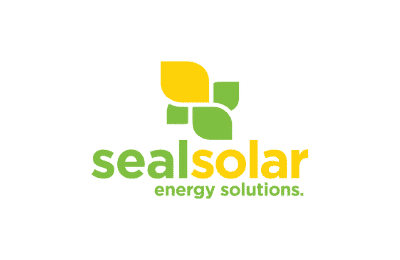
Local Service
Average cost
Pros
- Outstanding customer service
- Great warranty coverage
- Representatives are experts on local policies
Cons
- Limited service area
- Limited brands of solar equipment available
- No leases or PPAs
Watch Below: Learn What Arkansas’ Solar Outlook Is and What That Means For You
How to Figure Out if Solar Panels Are Worth It in Arkansas
Arkansas is generally a good place to install solar panels, but converting to this renewable energy source certainly isn’t right for everyone. Below are some deciding factors you should consider that can help you determine if solar is right for you and your home.
What’s Your Home Electricity Consumption?
A huge part of figuring out if solar will benefit you financially is calculating your monthly energy needs. Solar panels provide savings for solar customers primarily because of the reduction they provide on electric bills, so they’re particularly useful in areas where electricity consumption is high or electricity rates are above average. Generally speaking, solar panels are smart investments for homes that use more than 500 kilowatt-hours per month. The average home in Arkansas consumes around 1,060 kWh every month, meaning most homes will benefit from solar from an energy consumption standpoint. You can check your average energy needs on your past electric bills, but you might have to do some math to figure out the average consumption.
How Much Is It To Go Solar in Arkansas?
The price of solar panels in Arkansas depends on the system size you need to offset your energy bills, but the average price per kilowatt installed is around $3.17. This is well below the national average, making Arkansas one of the most affordable state for photovoltaic equipment in the country. Most homeowners pay a total of $34,870 or $24,409 after the federal tax credit for the average system size in the state. As mentioned above, solar energy is more valuable in areas where energy prices or consumption is high. In Arkansas, consumption is above average, energy prices are below average and the price of solar equipment is well below average. Overall, going solar is usually considered a good investment in the state.
What’s the Payback Period for Solar in Arkansas?
Residential solar panel systems usually pay for themselves by providing energy savings that offset the installation fees. In Arkansas, the panel payback period is typically around 14 years, which is above the national average of 12 years. This is primarily due to the low energy rates in the state, which means lower-than-average savings every month. Most Arkansans pay off their solar PV systems between 11 and 17 years. The payback period is a good way to see if solar is worth it and how much you’ll save in the long run. If your estimated payback period is under 14 years, solar is better for your home than most in your area. If it’s above 17 years but under 25 years, you’ll still save some money, but your return on investment will be lower in the long run.
What Are Average Buy-Back Rates in Arkansas?
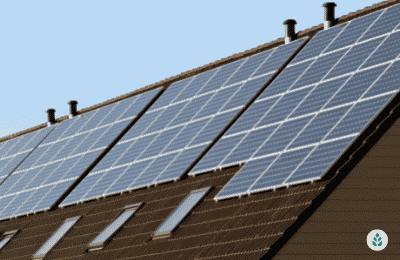
How Much Sun Does Your Roof Receive?
Solar panels require direct sunlight to produce energy. Since the amount of energy your panels generate is directly responsible for how much money you ultimately save, homes that receive an abundance of sunlight will find solar panels most valuable. Arkansas as a whole receives 217 sunny days per year, which is above the national average of 205. Generally speaking, this makes Arkansas a good place to convert to solar. However, you also need to consider some things specific to your home, like where your roof faces and the shading on your property. South- and west-facing roofs in the United States receive the most sun, so your home may not be suitable for panel installation if your roof only faces north or east. Additionally, shading on your property from trees, buildings, or other obstructions will reduce your energy production and make your panels less valuable overall.
What’s the Outlook on Solar in Arkansas?
While Arkansas has a relatively small solar market compared to most other states, the prevalence of residential solar installations has steadily increased over the past decade. Utility-scale solar has also become more popular in recent years. The bump in popularity for this clean energy solution is in large part due to the favorable solar policies in Arkansas — including net metering — that make going solar more appealing. Generally speaking, solar energy is widely accepted throughout AK, and the solar industry is expected to continue to grow in the near future. Additional growth will likely bring about even lower installation expenses and greater accessibility.
Benefits of Solar Energy in Arkansas
There are quite a few benefits of installing solar panels in Arkansas that make converting more appealing. We’ll discuss the most significant upsides below.
Electricity Bill Savings
Most homeowners understand that the primary financial benefit of going solar is the reduction in their energy expenses the panels will provide. In Arkansas, the abundant sun and excellent net metering policy make it relatively easy for homeowners to significantly offset or eliminate their electric bills. With an average monthly electricity bill of $132.71, Arkansans stand to save up to around $1,592 annually on power bills. The average savings a solar system will provide after it pays for itself in Arkansas is approximately $23,806! In reality, your savings could end up being even higher. These numbers are based on current electricity prices, and power is expected to become more expensive in the future. Going solar means you’ll be able to avoid the negative impact of energy price hikes for the 25+ years your system is expected to produce electricity.
Lower Taxes & Access to Other Incentives
The federal and state governments provide several solar incentives to make converting even more appealing and worthwhile. Most notable is the solar tax credit (ITC), which is a large credit to your federal income taxes for the year your system is installed and commissioned. The ITC is for 30% of your entire system expense, which averages out to around $10,461 in Arkansas. Some additional solar incentives available in Arkansas are listed below:
- Net Metering: As mentioned above, net metering helps homeowners reduce their energy bills even further by providing the opportunity to sell back excess power production to their utility companies. Arkansas has an excellent policy that mandates net metering and that the buy-back rate never dips below the retail rate for energy.
- Property Assessed Clean Energy (PACE) Financing: PACE Financing is available in Arkansas and can help solar customers secure more favorable and affordable financing options. This ultimately makes solar more accessible throughout the state.
Home Resale Value Increase
One of the benefits of solar that is easy to miss is the increase in home value solar panels provide. Research from Zillow suggests that the average home will jump in value by around 4.1% when a solar power system is installed.3 In Arkansas, where the average home is valued at $197,411, most residents will see around $8,093 in added property value.4 This upside could be even more substantial in more expensive areas, like Little Rock and Fayetteville. It should be noted that this benefit is only available to homeowners who purchase their systems outright or use a solar loan to acquire them. Solar leases and power purchase agreements (PPAs) will not provide the same upside.
Clean, Renewable Energy
Finally, you’ll be benefiting the environment when you convert to solar energy because you’ll be reducing your dependence on fossil fuels. Ultimately, you’ll also help reduce air and water pollution and global warming. Becoming more energy independent also means you won’t be as reliant on your utility company, meaning you can avoid energy rate spikes in the future.
What to Look Out For When Considering Solar in Arkansas
Your due diligence is far from over once you confirm that solar panels will benefit your home. There are several other considerations to make and things to be aware of as you proceed with the installation. We’ll discuss some more important things to understand below.
Upfront Fees
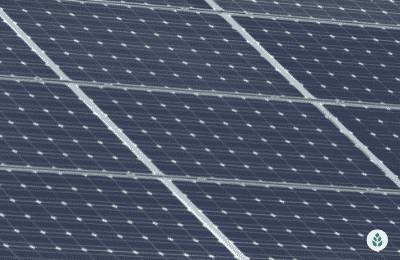
Payback Period
The solar panel payback period is one of the best metrics you can use to gauge the value of solar panels on your property, but you can also use it to estimate your overall energy savings. Your solar equipment is expected to produce energy for at least 25 years. By subtracting your panel payback period from 25 years and then multiplying by your annual energy savings — an average of $1,592 per year — you can estimate your panels’ total expected return on investment — an average of $23,806 in AK. If your payback period is over 17 years, your ROI will be substantially lower.
Net Metering Policies in Arkansas
Arkansas has a wonderful net metering program that is mandated throughout the state, but the policy specifics can still vary a bit between utility companies. You should check with your electricity provider before signing anything. While all solar customers will have net metering at retail rates, some companies have even more favorable programs that allow you to cash out any charges for overproduction.
Pending Policies & Changes to Incentives
It’s important to remember that policies and solar incentives are always subject to change, especially as the solar market increases in Arkansas. You might find that new incentives or rebates pop up, old ones improve or disappear or other unexpected changes. While it’s not usually worthwhile to wait for better incentives to come around, you should get yourself up to date with current incentives once you’re ready to convert to solar.
Weather & Climate in Arkansas
Rainy and cloudy days will decrease your panels’ efficiency, but Arkansas as a whole receives an above-average number of sunny days. As such, there is typically plenty of sunshine available to make going solar a worthwhile investment in the area. Some residents worry about the extreme weather that’s common in Arkansas, including severe thunderstorms, tornadoes and hail storms. Strong winds can pose an issue for panels, but choosing a solar installer that provides a decent warranty is typically enough to provide the peace of mind you need in Tornado Alley. Hail very rarely damages rooftop solar panels, and rain will only serve to keep your panels clean and at peak production for those sunny days.
Companies Pushing Solar Leases or PPAs
Finally, an important consideration you’ll have to make is the solar panel installation company you choose to complete your home solar project. Some companies aren’t particularly reputable and will offer things like “free panels” or push solar leases or power purchase agreements (PPAs). Don’t get a lease, as they don’t provide the same long-term savings as a loan, they don’t let you take advantage of the ITC and they don’t boost your property value. There have been many reports from Arkansas residents about pushy solar salespeople who try to sell homeowners on solar leases, often claiming affiliation with local utility companies or governmental agencies. Just be careful which company you choose, and always go with one that is vetted and has a history of success and positive customer experience.
Wrap Up: Is Solar Worth it in Arkansas?
Given that solar equipment is relatively inexpensive in Arkansas, the above-average days of sunlight every year and the above-average energy consumption in the state, solar conversion is generally a good option. However, it’s not ideal for everyone, so you’ll have to calculate how valuable your panels will be for your home before deciding. Some things you should consider include your monthly energy needs, your estimated solar panel payback period, shading on your property, the direction your roof faces and more. Given how complicated the decision process can be, we recommend connecting with a vetted solar installer in your area to help you determine if solar panels are a good fit for your property.
See also: See how much you can save by going solar with the EcoWatch Solar Calculator
Read More About Going Solar
- What Is the Price of Solar Panels Arkansas?
- What Arkansas Solar Incentives Are There in 2022?
- How Much Do Solar Panels Cost in Arkansas?
The cost information presented in this article is derived from a comprehensive analysis, incorporating data from multiple industry sources. The average cost per watt per state was calculated based on figures from Consumer Affairs, Energy Sage, and Berkeley Lab’s Electricity Markets & Policy Department. Additionally, monthly energy consumption and the average monthly cost of electricity were sourced from the U.S. Energy Information Administration, ensuring a well-rounded and accurate representation of the information presented.
Frequently Asked Questions
The EcoWatch team regularly gets questions from Arkansas homeowners about the value of solar in the area and the best way to determine if panels will save money over time. Below are some of the questions we see most often, along with our responses. If you have specific questions that aren’t answered here, reach out to our team of solar experts at solar@ecowatch.com.
The answer to this question depends on quite a few things, including how much sun your property receives, how much you pay per month on electricity, the size, and energy efficiency of your home, and much more. You can use a solar calculator to get a decent guess as to how long your solar panel payback period will be, but the best estimate will come from an experienced solar installer after a thorough assessment of your home. With that being said, the average homeowner in Arkansas will find that their solar system pays for itself in around 13 years. A timeline between 11 and 17 years is considered normal in the area, although this is a bit longer than the national average.
In general, installing solar will save you money, especially if you determine that solar is a viable option for your home. Most home solar systems pay for themselves and then continue to provide energy savings for 25+ years. The average savings enjoyed by Arkansans after their system pays itself off is around $23,806.
Yes! The bump in property value you’ll enjoy when you go solar is one of the most significant financial benefits of installing panels on your home. Estimates from Zillow suggest that home value jumps up by around 4.1% with solar panel installation. In Arkansas, the average value bump is approximately $8,093.
Yes, permits are required for solar panel installation in Arkansas, but your solar installer will very likely be willing and able to handle the permitting process for you. Permits add to your total installation expense but also provide you with peace of mind that your system is installed safely.
You can install your own solar panels in Arkansas, but you’ll still need a professional’s help to connect them to the grid via your inverters. Even so, DIY installation is not recommended, as the risk involved far outweighs the money you’d save on labor expenses. We strongly recommend deferring to a licensed and insured solar panel installation company to handle the work for you.
Top Solar Installers in Arkansas Cities
Comparing authorized solar partners
-
- Industry-leading in-house financing
- Competitive pricing
- Excellent reputation
- Doesn't offer solar batteries (coming 2022)
A+Best Solar Financing2014Trina Solar, Canadian Solar, SolarEdge, Silfab, SunPower25-year manufacturer warranty; 10-year workmanship warranty, 2-year production guarantee
Having trouble deciding? Click below and use our process to receive multiple quotes instead:

 233k
233k  41k
41k  Subscribe
Subscribe 
